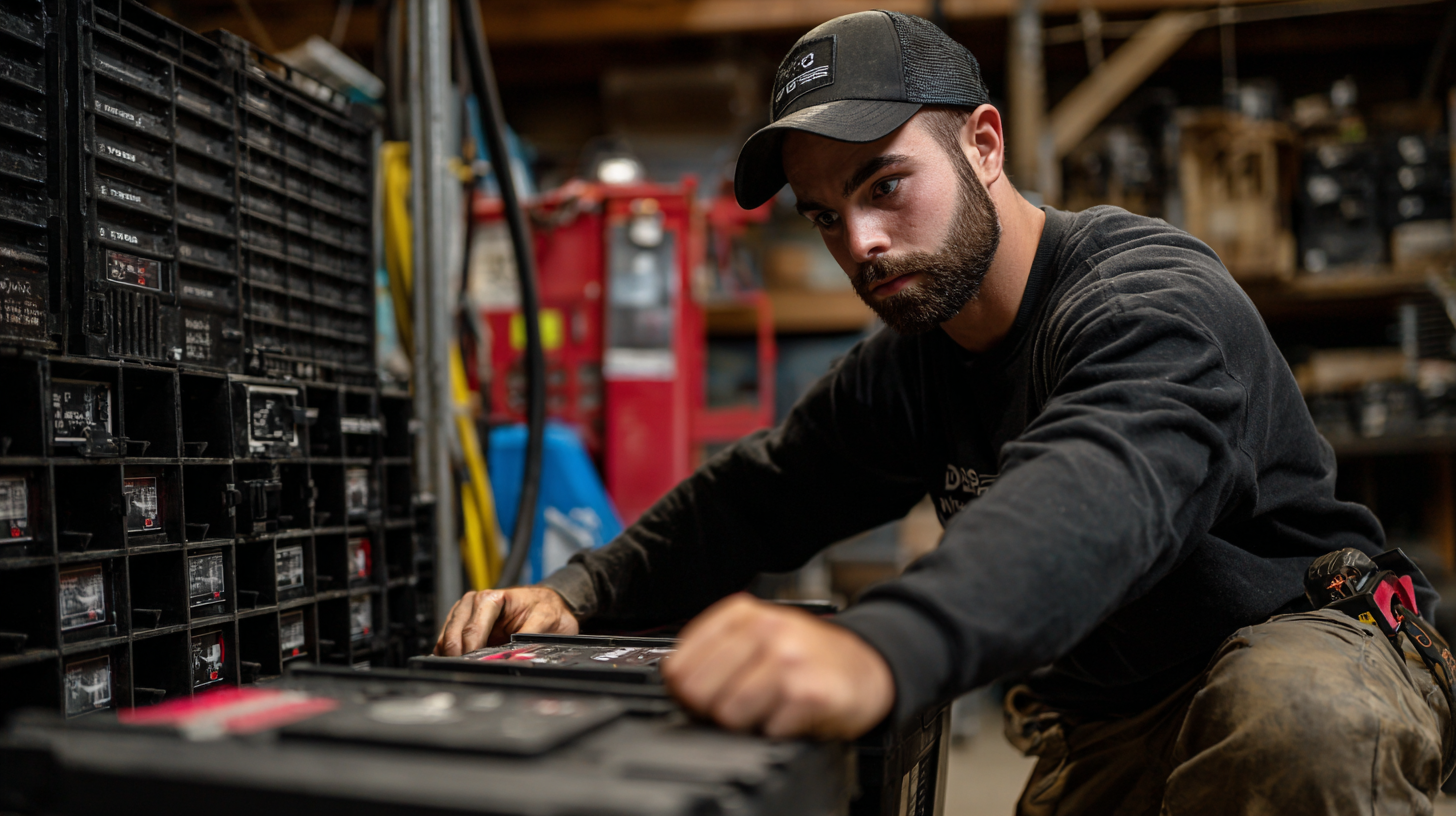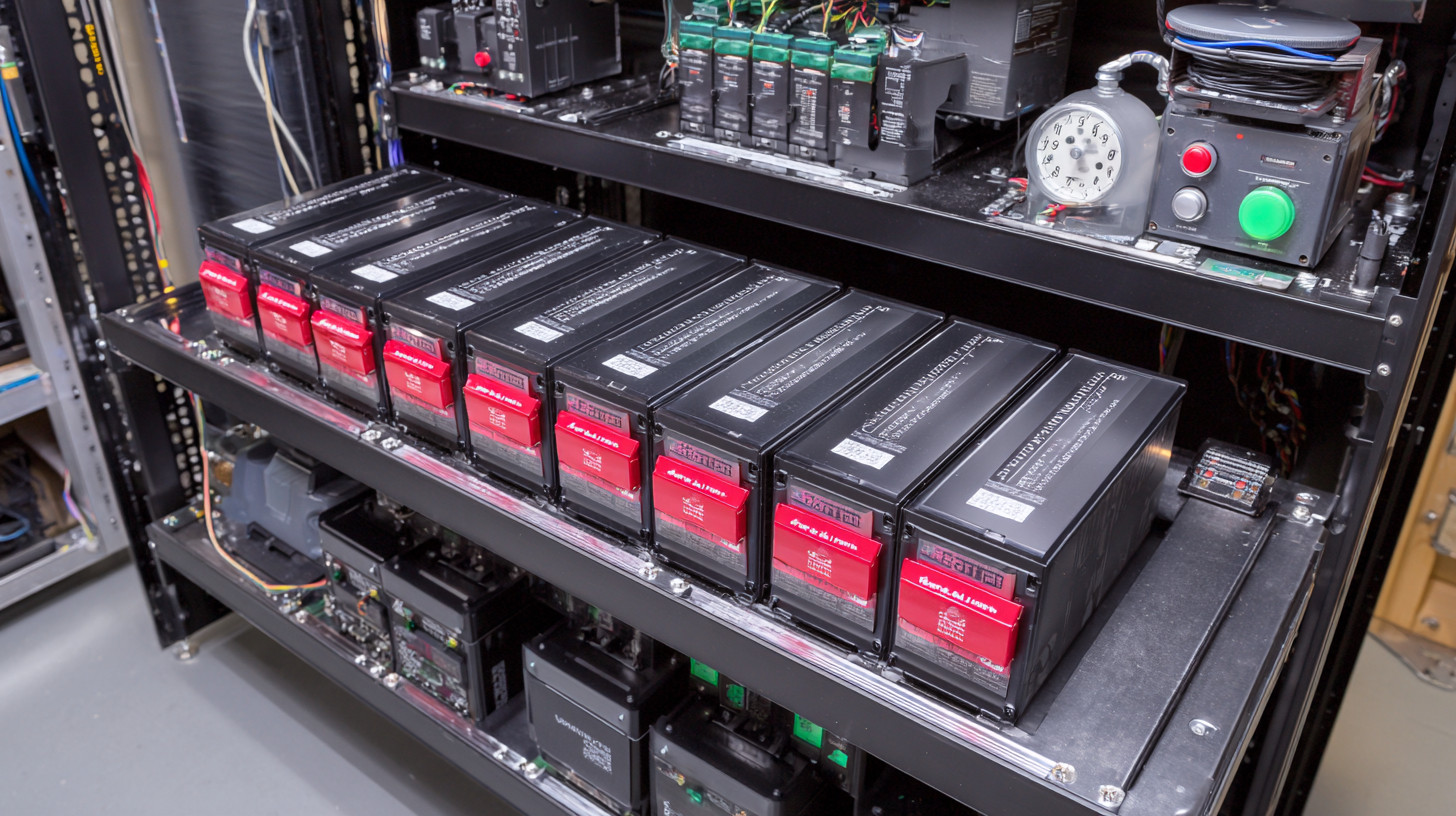
-
Home
-
Company
-
Products
-
News
-
FAQs
-
Blog
-
Contact
-
Phone
-
E-mail
-
Whatsapp
Leave Your Message

Choosing the right power source is crucial for both industrial and residential applications, particularly when it comes to high-capacity energy solutions like 48 Volt 300 Amp Batteries. As the demand for renewable energy systems, electric vehicles, and backup power sources increases, understanding how to select batteries that meet specific power needs has never been more important. According to a recent industry report by Grand View Research, the global energy storage market is expected to reach USD 546.54 billion by 2035, highlighting the growing reliance on efficient and reliable battery technologies.

With advancements in lithium-ion and lead-acid battery technologies, consumers now have a variety of options tailored to different applications. This blog aims to provide essential insights into what factors to consider when choosing the right 48 Volt 300 Amp Batteries to optimize performance and ensure sustainability in your energy solutions.
When considering your power requirements, it's essential to understand how 48 volt 300 amp batteries can truly meet your needs. These batteries are commonly used in various applications, including solar energy systems, electric vehicles, and off-grid setups. With a capacity of 14,400 watt-hours, they provide substantial energy storage, making them ideal for users who require a reliable source of power for extended periods. Whether you're powering appliances, tools, or an entire system, knowing your energy consumption helps ensure you select the right battery setup.
To effectively harness the capabilities of 48 volt 300 amp batteries, first, calculate your total energy requirements. Determine the wattage of devices you intend to use and how long they will operate daily. This evaluation allows you to understand how many batteries you might need to ensure you have enough power reserve without overloading your system. Moreover, consider factors like battery efficiency, discharge rates, and charging cycles to optimize performance. Armed with this knowledge, you can confidently choose batteries that not only fit your power demands but also enhance the longevity and reliability of your energy solutions.

When selecting the right 48 Volt 300 Amp batteries for your power needs, several key factors must be considered. First and foremost is the capacity and efficiency of the battery. A higher amp-hour rating indicates a longer-lasting battery, crucial for applications that require sustained energy output. According to industry reports, lithium-ion batteries often provide higher energy density than traditional lead-acid options, making them more suitable for applications where space and weight are critical.
Another important factor is the discharge rate. Assessing how quickly a battery can deliver energy is essential for ensuring it meets your operational demands. A battery with a high discharge capacity allows for quick energy delivery, which is particularly advantageous for usage in hybrid systems and electric vehicles. Recent advancements in 48V mild-hybrid technology underscore the growing trend of integrating such batteries into automotive applications, highlighting their reliability and efficiency.
**Tips:** Always check the manufacturer's specifications for cycle life and maintenance requirements to ensure you select a battery that aligns with your usage patterns. Additionally, consider environmental factors such as temperature range, which can affect battery performance and longevity. It's advisable to consult industry professionals or detailed technical reports to aid in your decision-making process.
This chart compares the energy capacities of different types of 48 Volt 300 Amp batteries to help you choose the right one for your power needs.
When selecting the right 48 Volt 300 Amp batteries, understanding the differences between lead-acid and lithium-ion options is crucial. Lead-acid batteries have been a long-standing choice due to their lower initial costs and robustness. However, they come with significant drawbacks, such as shorter cycle life—typically around 500 cycles—and longer charging times compared to lithium-ion batteries. According to a report by the Battery University, lithium-ion batteries can provide up to 2,000 cycles, making them more efficient in the long run despite their higher upfront cost.

Tips: If budget constraints are a priority, lead-acid might be suitable for non-critical applications. However, for those seeking longevity and reduced maintenance, investing in lithium-ion can be more cost-effective over time.
Furthermore, the weight and space considerations also differ significantly. Lead-acid batteries are heavier and bulkier, while lithium-ion batteries offer a more compact solution, allowing for easier installation and better performance in space-limited scenarios. Industry data shows that lithium-ion batteries maintain a higher energy density, enabling more power to be stored in smaller units.
Tips: Ensure to evaluate the space availability and weight limitations in your setup before making a final decision—this could significantly influence your overall battery performance and efficiency.
Maintaining your 48 Volt 300 Amp batteries is crucial to ensuring their longevity and optimal performance, especially if you're using them in applications like golf carts or marine vehicles. Regular maintenance tasks include cleaning the terminals and checking for corrosion, which can impede performance and reduce lifespan. Make it a routine to inspect battery connections and cables for signs of wear or damage. Keeping the terminals clean and tight will help maintain a solid connection and prevent unexpected power losses.
In addition to physical maintenance, monitoring the charge cycles is essential. Avoid letting your batteries discharge too deeply, as this can significantly shorten their lifespan. Aim to recharge them before they drop below a certain voltage level. If you’re using lithium batteries, familiarizing yourself with their specific requirements can ensure they operate efficiently. Proper storage is also key; ensure they are stored in a cool, dry place when not in use to prevent degradation. Following these maintenance tips will help maximize the longevity of your 48 Volt 300 Amp batteries, allowing you to enjoy your power rides for years to come.
When considering 48 Volt 300 Amp batteries for your power needs, budgeting is a crucial aspect that can significantly influence your overall investment. The initial costs of these batteries can vary widely based on brand, technology, and capacity. Whether you opt for lithium-ion or traditional lead-acid batteries, understanding the price range will help you allocate funds efficiently. Additionally, don't overlook installation costs. Hiring professionals to set up your battery system may seem like an extra expense, but improper installation can lead to safety hazards and equipment failures, ultimately increasing long-term costs.
Long-term savings should also factor into your decision-making process. Investing in higher-quality batteries may involve a steeper upfront investment but can yield substantial savings over time. Lithium-ion batteries, for instance, often have longer lifespans and better efficiency compared to lead-acid options, reducing replacement frequency and maintenance expenses. By carefully analyzing both the immediate costs and the long-term financial benefits, you can choose the right 48 Volt 300 Amp batteries that not only meet your energy demands but also fit your budget in a sustainable way.





